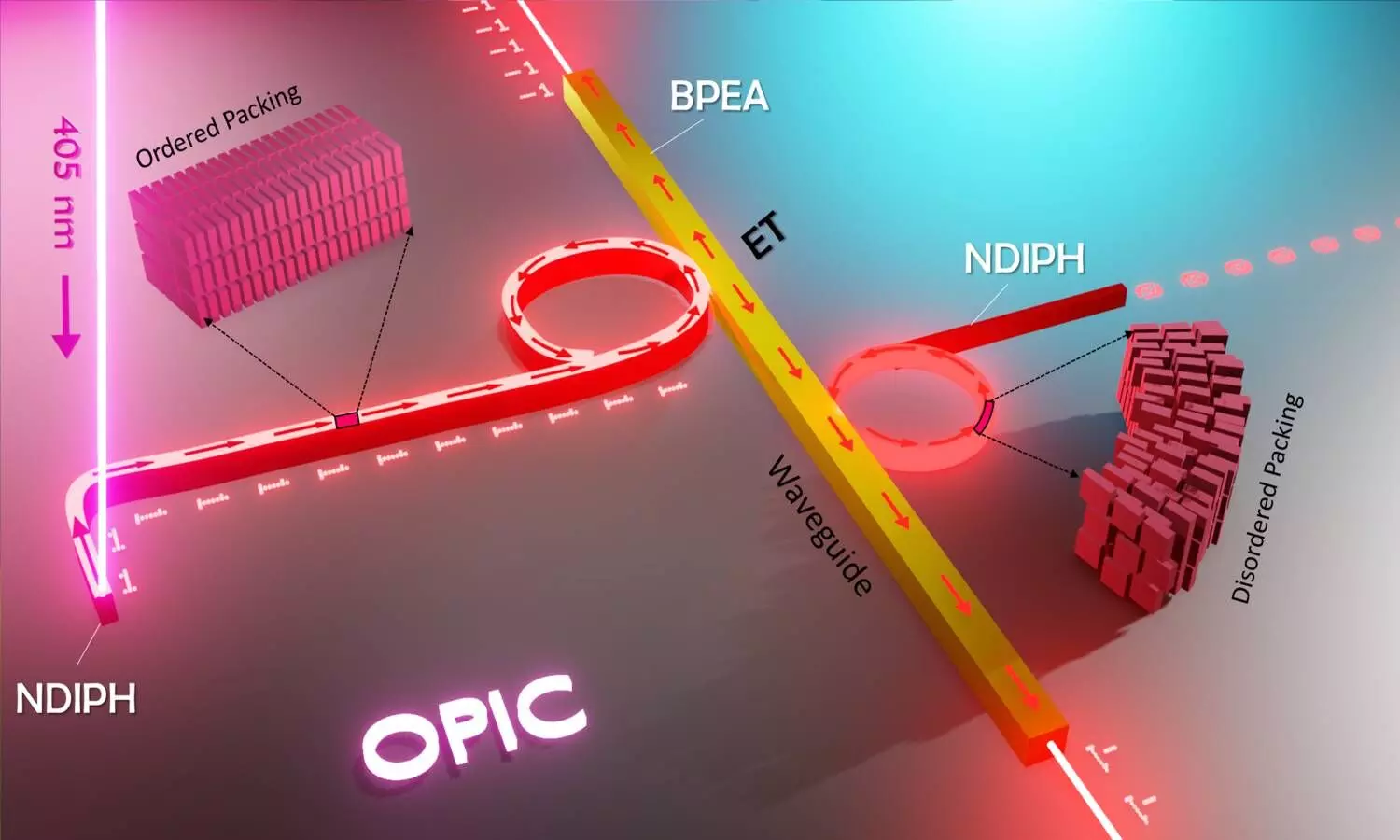UoH researchers find novel approach to build reconfigurable organic photonic integrated circuits
Early research activities focused on developing silicon-based photonic integrated circuits (PICs). These devices are capable of transferring/processing information using light, primarily due to the viable and cost-effective manufacturing industry.
By Newsmeter Network
Hyderabad: Can you imagine electronic or photonic devices without Silicon (Si) or the derivative of Si? Yes, suggests the latest breakthrough research on micro-organic photonic integrated circuits/devices (OPICs) using flexible organic crystals as basic optical components by researchers from the School of Chemistry at the University of Hyderabad (UoH).
To overcome the disadvantages of the present-day electronic-based data communication system, the UoH researchers came up with the idea of a light-based data transfer technique and energy-efficient data processing technology.
Early research activities focused on developing silicon-based photonic integrated circuits (PICs). These devices are capable of transferring/processing information using light, primarily due to the viable and cost-effective manufacturing industry.
Jada Ravi, a final-year PhD student, exploited flexible organic crystal waveguides as a substitute to silicon-based waveguides to build organic PICs (OPICs). The PICs fabricated using organic crystals/materials are called OPICs. Here two things are essential, the material and the fabrication technique. The vast knowledge of synthetic organic chemistry allows for novel design, synthesis, and processing of organic crystals depending on the desired property (mechanical or optical). Hence, it will enable researchers to develop flexible organic waveguides with ease.
Recent developments in flexible waveguides prove the versatility of organic crystals as effective light transducers. This impeccable mechanical flexibility of crystal waveguides makes them superior candidates for OPICs fabrication. However, the crystals cannot be transformed into PICs using conventional techniques. Organic crystals being low melting, high thermal conditions, traditional PIC fabrication techniques cannot be employed. Therefore, Prof. R. Chandrasekar's group envisioned the mechanophotonics approach (a field developed by his research group) to micromanipulate organic crystal waveguides and resonators using a confocal optical microscope attached to atomic force microscopy (AFM) cantilever tip.
The UoH team successfully demonstrated the construction of functional OPIC, which delivers excitation-position-dependent mechanism-selective light outputs at various crystal termini. The uniqueness of the fabricated circuit is that all the essential optical elements (waveguide and ring resonator) are obtained from flexible organic crystals. A clever design strategy to exploit the energy transfer mechanism from one crystal to another cemented the signal bandwidth specificity adding to its performance.
Further, due to crystal flexibility, the OPICs are reconfigurable depending upon technological necessity. The mechanical compliance of the flexible crystals was utilized to achieve multiple circuits by post-fabrication modification, which is not possible with silicon-based PICs. Hence, this work opens a new dimension towards the development of all-organic PICs. The researchers believe this field's advancement takes them closer to achieving light-based communication technologies with low-cost devices.